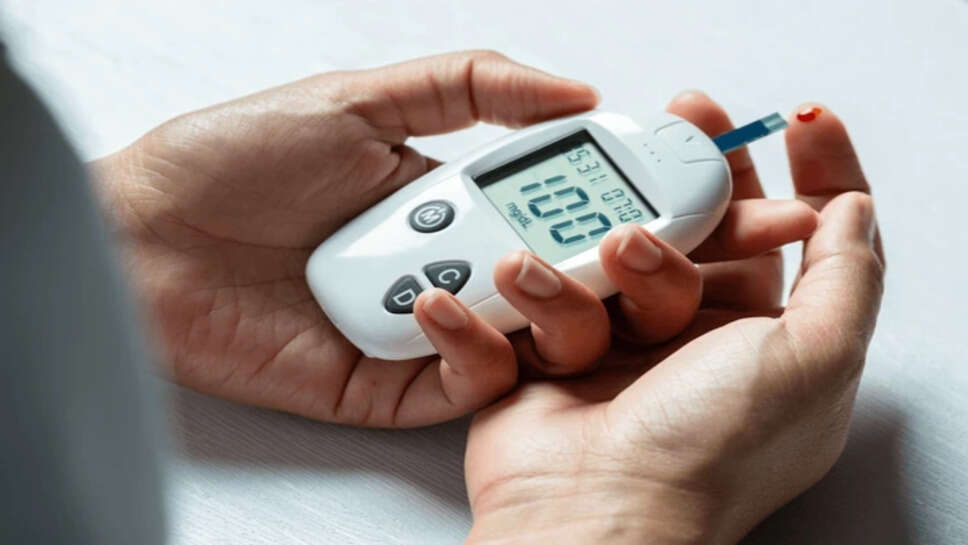From Diagnosis to Management: How to Take Charge of Your Diabetes

A diagnosis of diabetes can feel overwhelming at first. Whether it’s Type 1, Type 2, or even gestational diabetes, hearing that you have a chronic health condition that affects your blood sugar can trigger anxiety, confusion, and a flood of questions. But the key takeaway is this: diabetes is manageable—and with the right lifestyle changes, medications, and support system, you can live a full and healthy life.
If you or someone you love has just been diagnosed, here’s a step-by-step guide on what to do next.
1. Don’t Panic—Get Informed
The first and most important step is understanding your condition. Diabetes simply means your body either doesn’t produce enough insulin (Type 1) or doesn’t use insulin properly (Type 2). As a result, your blood glucose (sugar) levels become too high.
Instead of falling into a cycle of worry, empower yourself by learning:
-
The difference between Type 1 and Type 2 diabetes
-
How insulin works
-
Why blood sugar levels matter
-
What “A1C” means and why it’s important
Knowledge truly is power here. Ask your doctor questions, watch trusted medical videos, or read material from reliable sources like the American Diabetes Association or WHO.
2. Build Your Healthcare Team
You’re not in this alone. After your diagnosis, you’ll likely work with a team of healthcare professionals, which may include:
-
A primary care physician (PCP) or endocrinologist (diabetes specialist)
-
A certified diabetes educator (CDE)
-
A nutritionist or dietitian
-
A pharmacist
-
An eye doctor (diabetes can affect vision)
-
A podiatrist (foot care is crucial)
Don’t hesitate to ask for referrals or switch professionals if you feel you’re not getting the support or clarity you need.
3. Learn to Monitor Your Blood Sugar
Tracking your blood glucose levels is critical to diabetes management. Your doctor will tell you how often to check it depending on your type and treatment plan.
You’ll need:
-
A glucometer (blood sugar meter)
-
Test strips
-
Lancets (tiny needles for finger pricks)
-
A logbook or app to record your numbers
Over time, you'll start to see how food, exercise, stress, and sleep affect your readings.
4. Understand the Role of Food
Food is central to diabetes control. After diagnosis, one of the biggest lifestyle changes involves learning how to eat in a way that keeps your blood sugar stable.
Key concepts:
-
Carbohydrates raise blood sugar the most, so focus on portion control and quality
-
Choose whole grains, fiber-rich vegetables, and lean proteins
-
Avoid refined sugars, soda, and highly processed snacks
-
Learn to read nutrition labels
-
Work with a dietitian to create a personalized meal plan
You don’t have to give up your favorite foods—you just have to be more mindful of when and how much you eat.
5. Start Moving—Exercise Matters
Physical activity helps your body use insulin better and lowers blood sugar naturally. You don’t have to become a gym addict; even 30 minutes a day of brisk walking, cycling, or dancing can make a big difference.
Try:
-
Walking after meals
-
Stretching or yoga in the morning
-
Resistance training 2–3 times per week
-
Fun activities like swimming or Zumba
Before starting any intense exercise routine, consult your doctor—especially if you have cardiac or nerve issues linked to diabetes.
6. Take Medications as Prescribed
Depending on your type of diabetes, your doctor may prescribe:
-
Oral medications (e.g., Metformin)
-
Insulin injections
-
Other injectable drugs that help regulate blood sugar
It’s essential to:
-
Understand how your meds work
-
Know when to take them (before meals, after, etc.)
-
Watch for side effects
-
Keep a daily routine so you never miss a dose
Never stop taking medication without medical advice—even if your blood sugar improves.
7. Track Long-Term Health Markers
Diabetes isn’t just about daily sugar levels. Over time, high blood glucose can affect your heart, kidneys, eyes, and nerves.
Make sure to:
-
Get regular A1C tests (every 3–6 months)
-
Check your blood pressure and cholesterol
-
Do annual eye exams (to catch diabetic retinopathy early)
-
Monitor for tingling or numbness in feet or hands
-
Get kidney function tests as advised
Staying proactive is your best defense against complications.
8. Address the Emotional Side
A diabetes diagnosis can be emotionally draining. You might feel angry, sad, overwhelmed, or even guilty. This is all normal—and mental health is just as important as physical health.
Consider:
-
Talking to a therapist
-
Joining a diabetes support group
-
Practicing mindfulness or meditation
-
Journaling or connecting with others who have diabetes
Remember, you’re not weak for needing emotional support—you’re wise.
9. Create a Routine—and Stick With It
Routine is everything when managing diabetes. Consistency helps you avoid extreme highs and lows in blood sugar.
Try to:
-
Eat meals at the same time each day
-
Have a consistent sleep schedule
-
Take medications at the same time daily
-
Check sugar levels regularly
Over time, your routine becomes second nature.
10. Plan for the Future
Even if your condition is well-managed now, plan for emergencies:
-
Always carry fast-acting sugar (like glucose tablets or juice) in case of hypoglycemia
-
Wear a medical ID bracelet or card stating you have diabetes
-
Inform close friends, family, or coworkers about what to do if your sugar drops dangerously low
-
Keep extra medication and supplies handy when traveling
Also consider speaking with your doctor about long-term goals, such as preventing complications, losing weight, or even reversing Type 2 diabetes in some cases through lifestyle changes.
You’ve Got This
Being diagnosed with diabetes might change your life—but it doesn’t have to control it. With the right knowledge, tools, habits, and mindset, you can lead a vibrant and fulfilling life.
Diabetes may be part of your story, but it doesn’t define who you are.
Take it one day at a time. Learn, adapt, and grow stronger. Your future is still yours to shape.
